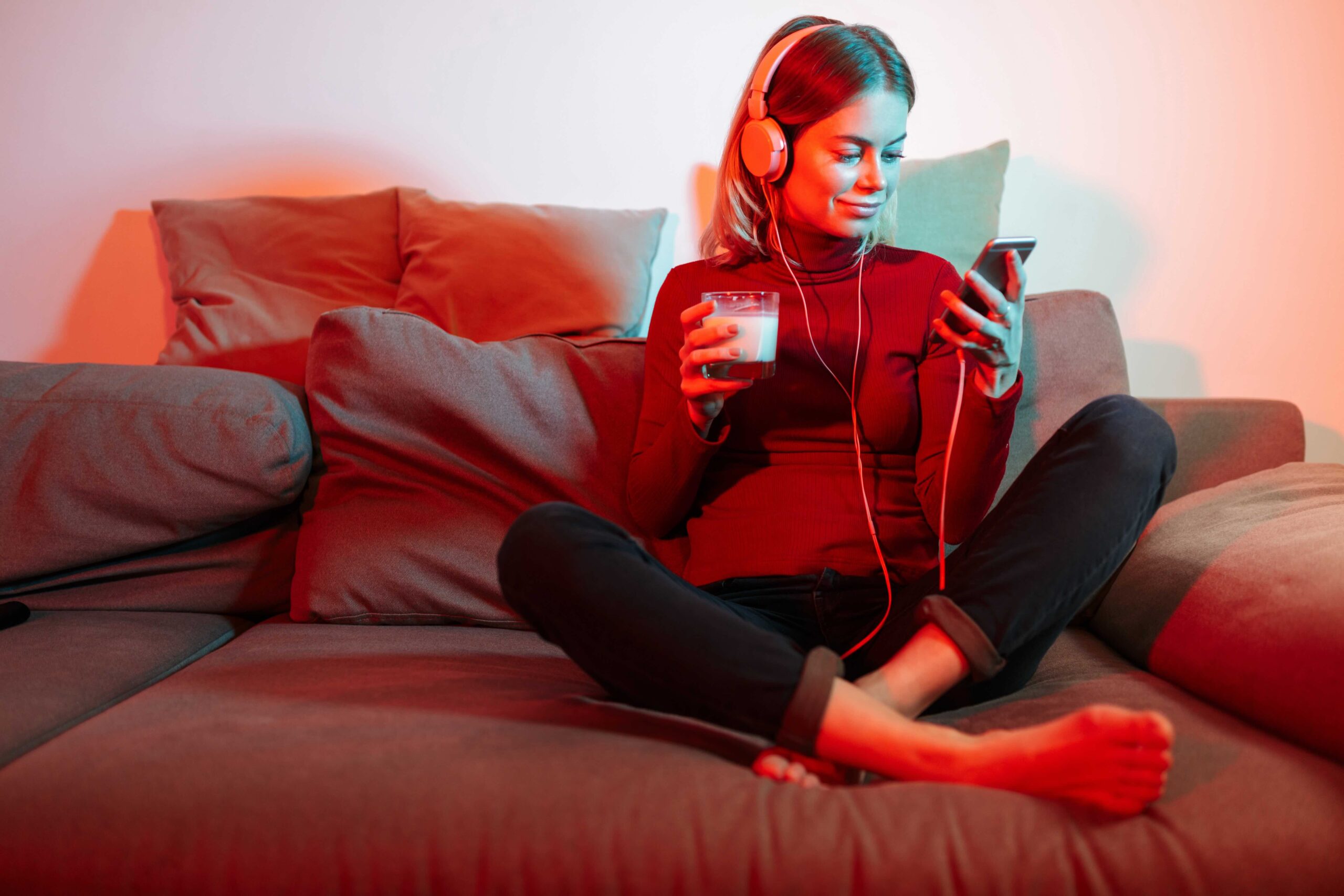Many people wonder if red light therapy (RLT) works when wearing clothes or if direct skin exposure is necessary. Most manufacturers recommend exposing your skin directly to the light, but is this truly required? Given that red light can penetrate deep into tissues—even reaching the brain through the skull – we tested how effective it is when applied over clothing.
To find out, we conducted a detailed experiment using different fabrics, measuring how much light actually reaches the skin. Here’s what we discovered.
The Experiment Setup
Devices, Distance & Measurements
For accuracy, we used a red light therapy device emitting both red and near-infrared (NIR) light at 60 mW/cm² from a distance of three inches. To measure how much light penetrated various fabrics, a spectrometer was placed at the same distance to capture irradiance levels.
At first a baseline measurement was recorded — the light intensity reaching the sensor with no barriers. This reading came in at around 60 mW/cm², setting a reference point for comparison.
Then, different materials were tested to see how much light made it through.
Testing Different Fabrics:
1. Thin Black T-Shirt
•Irradiance: 1.5 mW/cm²
•Light Loss: 98%
•Conclusion: Black absorbs most of the red and near-infrared light, making it highly ineffective for therapy.
2. Thick White T-Shirt
•Irradiance: 33 mW/cm²
•Light Loss: 46%
•Conclusion: Despite being thicker than the black shirt, its white color reflects light, allowing much more penetration.
3. Heavy White Towel
•Irradiance: 12.8 mW/cm²
•Light Loss: 79%
•Conclusion: Some light still penetrates, but a thick towel significantly reduces exposure.
4. Black Bike Shorts
•Irradiance: 2.4 mW/cm²
•Light Loss: 96%
•Conclusion: Near-infrared light passes slightly more than visible red light, but penetration is still low.
5. Thick Black Neoprene Knee Sleeve
•Irradiance: 0.002 mW/cm²
•Light Loss: 99.99%
•Conclusion: Dense materials like neoprene fully block red light therapy.
Key Takeaways: How to Get the Best Results
✅ Expose Skin Directly Whenever Possible
For the best results, red light therapy should be applied directly to bare skin. Even thin fabrics can significantly reduce effectiveness.
🎨 Choose Lighter Colors If You Must Wear Clothes
If full exposure isn’t an option (e.g., at a gym), wear white or light-colored fabrics, as they allow more light to pass through.
⏳ Adjust Session Duration for Clothing Layers
If using red light therapy over clothing, you may need to increase exposure time to compensate for reduced penetration.
🌡 Consider Near-Infrared for Deeper Penetration
Near-infrared wavelengths (850–860nm) penetrate deeper than red light (660nm) and may work better when wearing light fabrics.
Final Verdict: Does Red Light Therapy Work With Clothes On?
Yes, but with reduced effectiveness — especially with dark or thick fabrics. To maximize benefits:
•Use direct skin exposure when possible.
•If wearing clothes, opt for light-colored, thinner fabrics.
•Increase session time when light penetration is reduced.
By following these steps, you can still achieve great results, even when full exposure isn’t possible.
You can find our full range of Red Light Therapy devices
HERE.
Sources:
